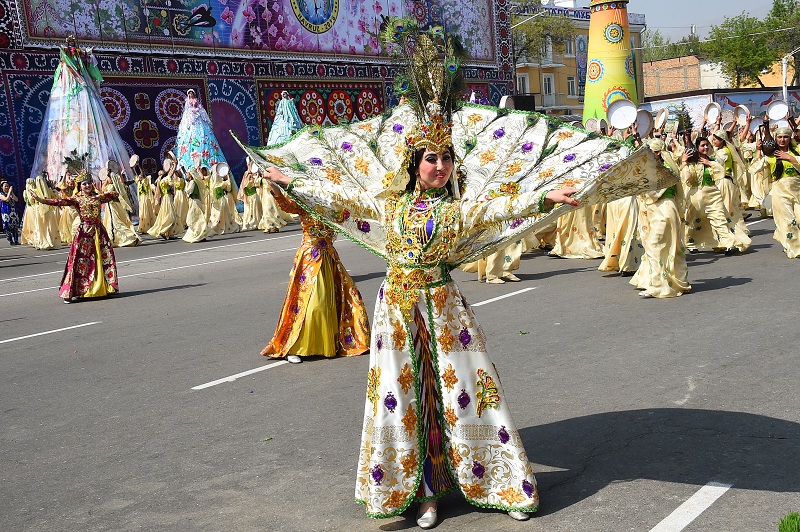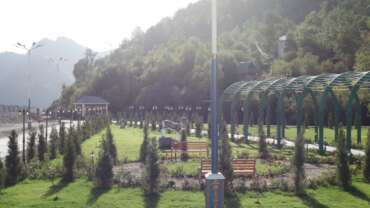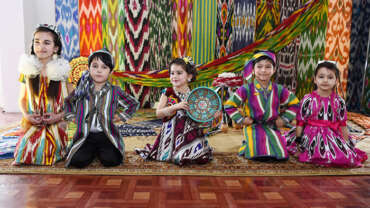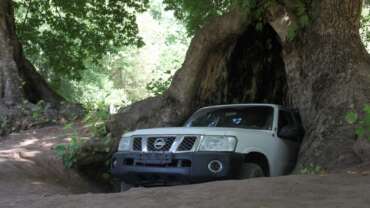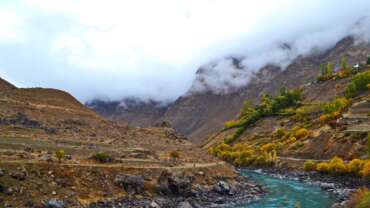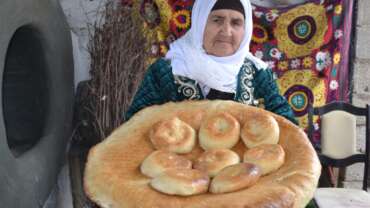Folk Crafts of Tajikistan
East art always drew the person the subtlety and flexibility, leaving the roots in an extreme antiquity. The Tadjik people have managed to keep and inform to the descendants the original culture, the huge contribution of Tadjiks to a treasury of art of the world testifies to it.
The territory of Tajikistan stores ancient monuments of the fine arts. Dwellings concern them in district Kajrakkum in the north of Tajikistan, by scientists the rough modelled ceramics with a geometrical pattern, and also the elementary forms of jewelry here is found. In second half of 2 th millenia BC in the south of the country, in particular, in Vahshsky and Bishkentsky valleys, nomadic cattle breeding tribes have left after themselves modelled and potter’s angobirated ceramics. These are pots, bowls, cylindrical vessels, bronze knifes, daggers, mirrors, pins, and also a primitive clay sculpture of the person from burial of an epoch of bronze in a place Tandyr-ate (near to Regarom). From constructions of time of board Ahemenidov, ancient Bactrian residential building from raw brick with rectangular premises ruins are found in the plan (6-4 centuries BC, a site of ancient settlement the Kalai-world in settlement it. Nasira Hisrava). Data about the fine arts of that time presents gold and silver jewels of the Amudarinsky treasure.
The art culture of Tajikistan of this time is represented by art nomadic saks tribes. Here scientists find out bronze coppers with a sculptural decor, figured metal plates with images of animals, finds in barrow burials of Pamir, rock paintings in Northern and the Central Tajikistan and in the west of Pamir.
Ancient and medieval art of Tajikistan has had the development, thanks to the trading Great Silk way connecting the East with the West, cultural-economic relations with Iran, India, East Turkestan, China, the countries of the Mediterranean. The big contribution is brought by the ancient population of Tajikistan in art of Bactria, the Kushansky kingdom, Sogd, Toharistan and Fergana, and also in art culture of the neigbouring people.
The national love to musical, dancing and singing arts lives centuries.
It is known that in XIV-XV centuries on city holidays acted musicians, singers, rope-walkers. Get popularity mass representations where story-tellers, dancers, conjurers participate later. The Tadjik professional theatre opened in 1929, admits to best of folk theatres. In republic set of theatres. Here national plays, operas, ballets are presented attention of the spectator. The most popular performances “Dohunda”, “Saodat”, operas “Revolt of Vose”, “Pulat and Gilru”, “Bahtier and Nisso”, ballets “Two roses”, “Lejli and Medzhnun”, “Dilbar” and others.
The Tadjik motion picture arts have reached the big successes. Today act in film art and documentary-newsreels: “Dohund”, “I have met the girl”, “Destiny of the poet”, “Zumrat”.
Musical art. Our time was reached by the difficult vokalno-tool products named makoms. In national musical culture to a song the leading role is taken away. The national song is sole voiced also consists of two parts – a song and a song-dance. To singers and dancers play such tools: string – dutors and rubobs, wind instruments – nays and karnays, shock – tavlaks and doyras.
Crafts and crafts developed in ancient times. Witnesses to it are unsurpassed monuments of woodcarving X – XII centuries found in a valley of Zaravshan, the patten fabrics which have been found out in the lock on a grief Mug, ceramics with a various ornament, wall lists of ancient Pendzhikent.
In cities of Tajikistan the whole quarters of weavers, potters, coppersmiths, smiths, woodcarvers and ganch worked. In mountain villages the female part on simple machine tools weaved non fleecy woollen and paper oriental carpets, and men on foot machine tools cultivated a paper fabric and wool on dressing gowns and trousers. The cities of Hodzhent, Ur-Tjube, Karatag, Gissar were the large craft centres.
The big rates potter’s art developed. In cities produced potter’s ware by means of a potter’s wheel. Potter’s skill passed from generation to generation.
Embroidery. Nowadays widespread an embroidery on clothes, in particular on zone scarfs, skullcaps, female dresses, suzane, on decorative coverlets – ruydyo and cloths – dastarkhan. The national pattern is based on two artistic touches. The first alternates the big bright stains, it is used in ornaments of fabrics, ceramics and an architectural list. The second reception puts on the first place the material invoice, forming a flexible line of a geometrical or vegetative ornament.
Masters decorate a carving on ganch, a moulding, a list various buildings.
Except applied art, easel painting, a drawing and a sculpture and painting develop also.
The fine arts
Today in Tajikistan conditions for revival of art creativity are created. The Tadjik artists and fashion designers manage have something in common with fashion of two cultures: east and European. In these dresses the spirit of tiny painting of the East is transmitted. In this collection the past and present fashion skilfully intertwines, colour shades are transferred, traditions and customs of Tadjiks are reflected. The national dress is decorated by interesting way of bandaging «gulbast». Colorful pattern details gather in a lump and are wound with a thread. Further a fabric lower in a red or claret paint, the diamond-shaped original pattern turns out.
Fashionable it is considered list art on the fabrics, a named batic, it is one of the most expensive kinds of works. The products ornated by an embroidery from gold threads, are popular at girls who marry. This technics is called «zarduzi».



